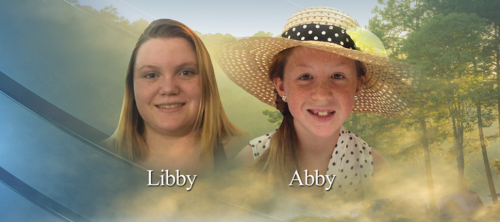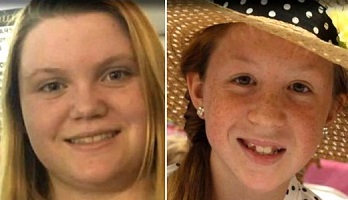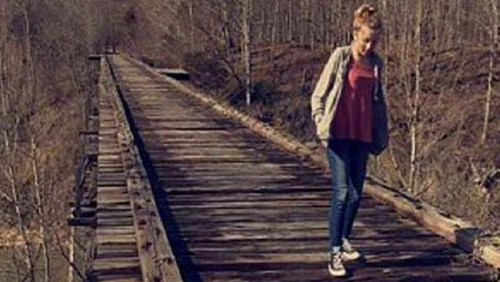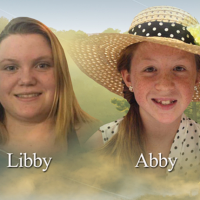Day 18 - closing arguments 2.5 hours maximum each. Nothing updated so far. I will come back to check and copy paste the remarks in a few hours.
Mcleland's is in. Just under an hour - see below link. The court reporting before the closing arguments are shown at the bottom.
The D were only about an hour too. Will add that when it shows up in the link. Prosecution rebuttal after lunch.
Delphi Murders trial continues with closing arguments from both prosecution and defense. Jury will decide the fate of suspect Richard Allen.

www.wishtv.com
Home /
News /
Crime Watch 8 /
Delphi Murders
Delphi Murders trial: Day 18 live blog
At 1:15 p.m. jury instructions began.
Judge Gull says the alternate jurors will be in the deliberation room, be engaged but will not participate. She says their decision must be beyond a reasonable doubt. She says the burden is on the state to prove that.
Gull says it is “not beyond all possible doubt.” She says that defendants are not convicted on suspicion. She tells the jury their decision must be unanimous.
She tells them if they are left with two interpretations, they must choose one that sides with innocence. She says they can take into account any bias the witness may have. She said they should believe the witness until they cannot with a good reason.
Gull says nothing she said during the trial should be considered evidence. She says there are no transcripts of the witnesses. She says there is nothing that was not admitted.
Gull tells the jury that during deliberation they must consult with reason. She says bailiffs will be outside the deliberation room. She tells them they cannot leave unless the full group is present. She says there is no mention of sentencing in the paperwork.
Gull says a foreperson will be chosen and will sign the verdict. Gull says the bailiffs took an oath that they will not communicate.
At 1:24 p.m. the jury leaves with instructions.
Judge Gull now lays out expectations for those outside the deliberation room. She says the attorneys need to be within 5 minutes of the court room. She says if the jury needs to see evidence, all attorneys will be invited.
Gull says that Allen will be brought in if the jury requests.
She says the jury will pick a foreperson. She says the jury will not deliberate on Sundays.
She says the jury will deliberate from nine a.m. to four p.m. daily, unless at 4 p.m. they choose to stay and deliberate longer. She says the jury will not deliberate on Sundays.
Court is off the record at 1:27 p.m. on November 7, 2024.
Defence rebuttal.
Court is back in session at 1:07 p.m.
McLeland begins his rebuttal to the defense’s closing argument.
He says it’s been a long 3 or 4 weeks, that now it is time to hand the case over to the jurors. He tells them “you’re in the driver’s seat.” “I’m not up here to tell you how to feel.”
McLeland says the defense did not back up their claims, that the prosecution has witnesses on the trail that day and that they simply reaffirm that Allen was there.
He tells the jury that witnesses after the murders on the high bridge do not matter.
McLeland points at Allen and says he used a gun to scare them. He says Libby had a “blood outline” of a tear on her face.
He tells the jury that Oberg’s testing was verified, that it links Allen to the crimes.
News 8’s Kyla Russell says Allen is extremely engaged and looking at Baldwin with disbelief.
McLeland says “words matter, why don’t Allen’s words matter?”
He says there are two victims in the case, Abby and Libby. He says “they are Allen’s victims. But they aren’t just victims, they are heroes.”
McLeland says “Libby said someday she is going to help police solve crimes, that’s exactly what she did.”
McLeland ends his rebuttal.
At 10:24 a.m. court is back in session and defense attorney Brad Rozzi begins his closing argument.
Rozzi tells the jury they’ve been there for almost a month and have seen 17 days of evidence. “The defense trusts that what you’ve heard over the last several weeks.”
Rozzi says there are four main themes:
- Broken timeline.
- Bumbled ballistics.
- False confessions.
- Digital forensics.
Rozzi tells the jury that the state has presented a theme of “what they don’t want you to hear, is what we had to tell you.” He says, “we had to do their job.”
Rozzi expands on that by saying that the state refused to have height analysis done on Bridge Guy. He says hours of video interviews from 2017 were lost. Rozzi tells the jury the state had to look at a detail about the Ford Focus after doing a BMV search in the middle of the trial after a juror asked about it. He said the juror asked if it was the only 2016 black Ford Focus registered in 2017.
Rozzi begins to describe witness testimony, saying that Brad Heath said he saw an unusual man that day. He said the Betsy Blair testimony didn’t tell the whole story.
Rozzi says “I have to take a breath before I talk about here,” when referring to Sarah Carbaugh.
He says Carbaugh conflated “muddy” with “bloody.” He tells the jury they may discount a witness, calling it “credible dubiosity.” He says the jury that they can discredit Carbaugh.
Rozzi says the prosecution did not tell them about David McCain, Shelby Hicks or Cheyenne Mill because it “doesn’t fit their narrative.”
Rozzi tells the jury the prosecution didn’t include Allen’s timeline regarding how he got to the bridge. Allen nods his head in agreement in the court room.
Rozzi suggests to the jury that they should use two pieces of evidence to exercise common sense; the two interviews from Oct. 13 and 26, 2022.
Rozzi says that Brad Weber’s gun could not be excluded as the one that cycled the cartridge found at the scene.
Rozzi says Weber had sticks in his garage and the state did not mention that. He brings up Weber’s account changed from Feb. 13.
Rozzi talks about phone calls on April 3, 2023 that the state didn’t bring up at all.
Rozzi says the state did not offer up information on the FBI leaving the investigation. He says the sticks laid on the girls’ bodies were not collected.
Rozzi brings up the Westville videos of Allen. He says Allen was in solitary and without human interaction. He says the state only wants you to hear a few words.
Rozzi says the ‘magic bullet’ is the majority of the state’s case. He says the state just wants the jury to believe Oberg and ignore the state not bringing up photos. “Use your common sense,” he says.
Rozzi mentions Libby’s phone being plugged into an accessory was not brought up by the state. He shows the jury a phone timeline. “You should question their credibility,” Rozzi says, referring to the prosecution. He says the state was desperate to make an arrest.
Rozzi tells the jury that the Brad Weber van detail was only recently added this year. He says it took seven years for the hair and DNA testing to occur. Rozzi says that Allen’s Google searches have no proof that Allen actually made the searches. The searches are only registered to his email, he says.
Rozzi says the Google search information was forensic examiner Chris Cecil offering the jury “fast food.”
Rozzi tells the jury that the man who performed the autopsies on the girls, Dr. Roland Kohr, said in a deposition that there may have been more than one murder weapon, but now says it could be a box cutter. He says Kohr said this after meeting with the prosecution three time.
Rozzi tells the jury that they should consider that Carbaugh didn’t see anything.
He says the state has only a few key moments in their timeline:
- Feb 13. at 2:13 p.m., the Bridge Guy video.
- Feb 13 at 3:56 p.m., Carbaugh sees man walking on 300N.
Rozzi calls Carbaugh’s testimony “worthless.”
He says Abby would have lived for 5-10 minute and could have screamed, but nobody heard any screaming.
Rozzi says the state ignored that there could have been more than one killer. He says he also ignored that someone could have accessed the bridge from the south side.
He says the state suggests the crime was ‘labor intensive’ and committed by a 5’5″ man, without a trace, in a short period of time.
Rozzi says “it is just implausible.”
Rozzi tells the jury Allen went to law enforcement after the murders in 2017 and was also cooperative in 2022.
He says Allen still cooperated after he knew he was a suspect.
Rozzi says “even through the face of lies, Allen stood strong.” He says Allen lived in the community and didn’t have a reason to leave because he didn’t do it.
Rozzi brings up the forensic examination Oberg did of the cartridge found at the scene. He says Oberg’s testing did not show “sufficient agreement” between the cartridge that was found and the cartridge that was tested.
He says the photos from the cartridge testing should be the main thing the jury is stressed by, because there isn’t agreement.
Rozzi says Oberg told them “you should just believe me.” He says the state did not have the cartridge re-examined because Oberg’s work was “so horrid.”
He tells the jury that Allen’s situation in this case is “unprecedented,” referring to Allen being in solitary confinement.
He says Allen was treated like a convicted murderer. Allen nods in agreement in the court room.
Rozzi tells the jury that Allen was “immediately placed on suicide watch, everyone would have a breakdown under those circumstances.”
He says Allen was in solitary confinement for 13 months. He asks “how much can one human endure?”
Rozzi says it was insulting that the state did not want the jury to see video of Allen in Westville. He says Allen was not faking it and even Dr. Wala and Dr. Martin said they weren’t sure he was faking it.
He says the Indiana Department of Correction’s medical standard was to keep Allen alive.
Rozzi tells the jury, “you should be insulted.”
Rozzi says Allen was having false memories during some of the confessions. He says the state lied about Libby’s phone. Rozzi says someone was using the phone between 5:45 p.m. and 10:32 p.m. on Feb. 13. He said someone plugged something into it during that time.
He says “there’s no explanation because the phone is right.”
Rozzi tells the jury there is no trace evidence that connects Allen to the crime scene. He said that Dr. Polly Westcott, a neuropsychologist, said that Dr. Wala’s notes read more like a story, despite Allen being psychotic and not coherent.
He says the state was desperate to make the sound in the Bridge Guy video the sound of a handgun racking.
Rozzi tells the jury there is a question as to if the girls’ bodies were at the scene during the evening of Feb. 13, 2017.
He says the Smith and Wesson cartridge found in the memory box is a very common brand.
Rozzi says Allen found God because he was in a cell alone with only a bible but that’s not why he confessed.
Rozzi tells the jury that there are five components for the jury to keep in mind:
- Nobody identified Allen as Bridge Guy.
- No digital data connects Allen to the crime.
- No clothing connects Allen.
- No DNA connects Allen.
- No trace material connects Allen.
Rozzi acknowledges the girls’ families. He says this has been a long journey.
Rozzi says “at the end of the day the state’s timeline has crumbled, the magic bullet is nothing more than a tragic bullet.”
Rozzi shows the jury a photo a rack, a medieval torture device. He shows a photo of a thumbscrew. He says these tools are not far from what Allen experienced in solitary confinement.
Rozzi says these tools are still used, they’ve just evolved.
Rozzi shows four photos of Allen in prison. In the photos he is covered in feces and being dragged while wearing a spit hood.
News 8’s Kyla Russell says while the photos are shown, Allen looks away. His wife Kathy is crying.
Rozzi says “rendering a verdict of guilt could be endorsing this behavior.”
Rozzi asks the jury to set Allen free.
He is finished at 12 p.m. after speaking for an hour ß 17 minutes.
12:10 P.M. THE DEFENSE HAS COMPLETED ITS CLOSING ARGUMENT, PROSECUTION TO GIVE REBUTTAL AFTER LUNCH BREAK.
10:55 A.M. PROSECUTION BEGINS ITS CLOSING ARGUMENT.
At 9:17 a.m. prosecutor Nick McLeland begins closing arguments.
He tells the jury “February 13th is a day Delphi will never forget.” He says the state has proven that Allen is Bridge Guy. He tells the jury “the State has done just that.”
McLeland talks about that day. Where Libby was the last time she talked to Becky Patty, Libby’s grandmother. He is showing the jury a Power Point with Libby and Abby’s Snapchat photo from Kelsi German’s car. He recounts the search Libby’s father made and how he called Becky Patty.
McLeland tells the jury about the search and that Brad Weber, the neighbors, let them look around his property. He says they did not look through the house at that time, however.
McLeland goes through the testimony of several people on the bridge and in the area that saw Bridge Guy, from Betsy Blair who saw the girls, to Sara Carbaugh who said she saw Bridge Guy “muddy and bloody.”
He says “that doesn’t happen around here,” referring to the murders. He describes the bodies being found and shows photos of the girls’ clothes in Deer Creek. He describes the crime scene being secured.
McLeland begins to talk about firearms and how officers in Carroll County carry 9mm handguns and not .40 cal. He says “remember that for later.”
He shows the crime scene and says “this is what they saw.” He says a phone was collected from under Abby’s shoe which was under her body. He says they collected a cartridge and shows it at the scene.
McLeland shows the jury a photo of Libby’s phone. He shows the Bridge Guy video from Feb. 13, 2017 at 2:13 p.m. He says “the video shows the moment they were forced down the hill by the guy in the video, Bridge Guy.”
“He forced them down the hill with a gun,” McLeland tells the jury.
He says Libby said in the video, “that be a gun.”
He shows the jury an enhanced version of the Bridge Guy video.
McLeland says law enforcement interviewed people on the bridge that day. He shows a photo a witness took of Freedom Bridge. He recounts Bre Wilber saying she saw a man on the trails “walking with a purpose.” He shows the jury Besty Blair’s Fitbit information. He talks about Sara Carbaugh seeing a man ‘muddy and bloody’ on 300N.
McLeland talks about Chris Cecil’s forensic examination of Libby’s phone, how he got health data from it. He says that data confirms when the girls were at the bridge. He says GPS shows where movement was at 2:32 p.m. and that there was no more movement after that.
He goes over the timeline with witnesses, when they arrived, where they went. He says Breann Wilber arrived at Freedom Bridge at 12:25 p.m. that day and walked to the high bridge. She took a photo at 1:26 p.m. at the bridge. He says she ran into Bridge Guy while walking back to Freedom Bridge.
McLeland tells the jury about Betsy Blair passing a camera at the Hoosier Harvestore, heading to the high bridge. He says Kelsi German’s car was also seen on that camera, passing it after she dropped the girls off. He says Blair saw a man on the bridge and passed Libby and Abby as they arrived on the bridge.
He says the Bridge Guy video was taken at 2:13 p.m. He tells the jury Libby’s phone stopped moving at 2:32 p.m. He says that Sara Carbaugh passed the Hoosier Harvestore camera at 3:56 p.m. and said she saw Bridge Guy and he was “muddy and bloody.”
McLeland says “if we can determine who Bridge Guy is, we can determine who killed Abby Williams and Liberty German.
McLeland moves ahead to 2022. He describes Kathy Shank finding the lead sheet regarding Richard Allen. He describes Shank taking the tip to Tony Liggett, a detective working on the investigation. He describes conservation officer Dan Dulin downloading a photo of Allen from the BMV.
McLeland says that it was determined that Allen’s car was the only 2016 black Ford Focus registered in Carroll County in 2017. He says former sheriff Steve Mullin went to the Hoosier Harvestore and got footage from the camera there of Allen’s Ford Focus at 1:17 p.m.
He says that on Oct. 13, 2022 Mullin called Allen in for an interview, he says Allen confirmed that we was wearing the same clothes Bridge Guy was wearing.
McLeland tells the jury that Allen said he saw three girls, but in the interview he changed the time he was there. He said Allen became angrier as the interview went on. He shows the jury photos of Allen’s Ford Focus in the garage during the search of Allen’s home.
He says they found the blue Carhartt jacket in Allen’s home. McLeland says “surprise surprise.”
McLeland says they found the Sig Sauer .40 caliber handgun and cartridges that were the same brand and caliber as the cartridge found at the crime scene. McLeland calls it a “Bridge Guy starter kit.”
He says they found a memories box and that box contained a .40 caliber cartridge. He says investigators found many electronic devices, but not the phone Allen used in 2017.
McLeland tells the jury that Allen searched “should I die now,” after looking at Delphi news in April 2022.
He tells the jury that Melissa Oberg found the cartridge at the scene cycled through Allen’s handgun and her work was verified. He says Allen confirmed in an Oct. 26, 2022 interview that he never load his gun or clothes out to anyone. He said Allen confirmed he did not loan anyone ammunition.
McLeland says “there is no explanation for how his bullet ended up there.” He says Allen’s wife Kathy was brought in for questioning and during the interview Allen manipulated her.
McLeland says Allen was arrested because he is Bridge Guy.
McLeland talks about calls Allen made in prison to his mother and wife. He describes a call Allen had with his mom where he says he has found faith. He plays a call with Allen’s wife where Allen says “I killed Abby and Libby,” his wife says “no you didn’t, dear, they are screwing with you there and I am trying to get to the bottom of it.”
He shows the confession letter Allen wrote to the warden. He shows the report from Dr. Wala on April 5, 2023 where Allen said his intentions were “sexual in nature.”
News 8’s Kyla Russell reports Allen is shaking his head during this.
McLeland tells the jury that Wala said that Allen’s behavior changed after his attorneys visited and that the shift in his behavior was intentional and that he was not psychotic.
McLeland reads multiple confessions made by Allen in prison, including one Allen made about using a box cutter to kill the girls.
McLeland says Allen told his mother in May of 2023 that “I wouldn’t sit here and tell you I did it, if I didn’t.”
He talks about another confession that Allen made in January 2024 after he had been moved out of the Westfield Correctional Unit.
McLeland describes Brian Harshman, the officer who read Wala’s reports and listened to Allen’s phone calls. He describes Harshman discovering the detail about the white van Allen said he saw while committing the crimes. He says Harshman verified the owner of that van in 2017.
He tells the jury that the owner of that van, Brad Weber did drive it that day. He points to Allen and says “something only the killer would know.” Allen raises his eyebrows.
McLeland says Harshman knew it was the same voice as Bridge Guy in all the calls he’s listened to from Allen.
McLeland shows the jury all the charges, which include charges for felony murder for killing Libby and Abby
He tells the jury, “now the pieces come together.”
McLeland says Bridge Guy “stole the youth and life” from Libby and Abby. he shows the Snapchat photo from Kelsi German’s car again. He says something in Libby caused her to begin recording on her phone. He tells the jury that there was a pause in the health data on Libby’s phone before Allen killed the girls.
He says “grabbing for her throat, struggling to stay alive, she begins to cry.”
He says Allen lived in the community for five years but didn’t know he left a cartridge at the scene.
McLeland reviews three points:
- Bridge Guy
- Bullet
- Confessions
“I believe the evidence is firmly convincing that Richard Allen is Bridge Guy and he killed Abby and Libby, McLeland told the jury.
After 58 minutes, McLeland is finished at 10:23 a.m.
10:34 A.M. COURT BEGINS, JUDGE GULL TALKS TO THE JURY.
Before court begins, News 8’s Kyla Russell reports that defense attorney Andrew Baldwin writes “Rick” on a coffee cup and gives it to Allen. Normally Allen gets a coffee from the courthouse but today Baldwin has purchased one from a local shop.
At 8:47 a.m. Allen enters the room. Russell reports that he has a regular, large sized bible today and not the typical Gideon style bible he’s had in the past. He is heard saying he loves the coffee. He shows defense attorney Jennifer Auger a verse in his bible.
Prosecutor Stacey Diener is seen hugging the German and Williams family members. Abby’s mother is crying and being comforted by family.
At 9:04 a.m. Judge Gull enters the court room. The jury enters at 9:07. Court is in session.
Gull says the jury again had supervised contact with their electronic devices. She explains some of the case specific jury instructions:
- The jury must follow all law while deliberating.
- The jury must consider all facts.
Gull reads all the counts against Allen. He shakes his head as Gull reads charges that say he killed “AW,” and “LG.” She explains the concept of beyond reasonable doubt and the definition of murder.
Gull explains that if the state proved beyond a reasonable doubt that Allen killed the girls, they must find him guilty and vice versa.
Gull explains “intentionally” and what it means.
9 A.M. COURT IN SESSION FOR THURSDAY


 en.wikipedia.org
en.wikipedia.org


 www.crimewatchers.net
www.crimewatchers.net




 www.crimewatchers.net
www.crimewatchers.net



